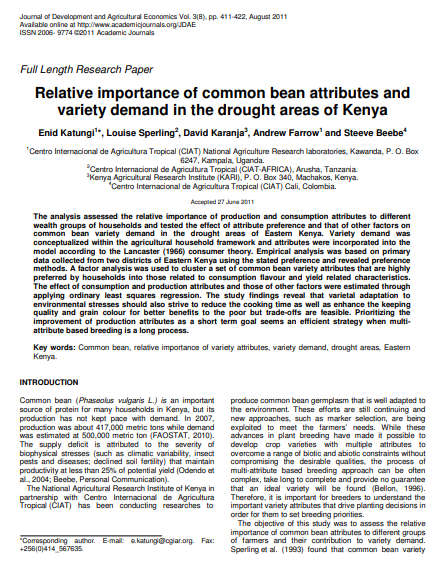Relative importance of common bean attributes and variety demand in the drought areas of Kenya
Summary
This analysis assessed the relative importance of production and consumption attributes for different wealth groups. It tested the effect of attribute preference and that of other factors on common bean variety demand in the drought areas of Eastern Kenya. Variety demand was conceptualized within the agricultural household framework, and attributes were incorporated into the model according to the Lancaster (1966) consumer theory. Empirical analysis was based on primary data collected from two districts of eastern Kenya using the stated preference and revealed preference methods. A factor analysis was used to cluster a set of common bean variety attributes that are highly preferred by households into those related to consumption flavor and yield related characteristics. The effect of consumption and production attributes and those of other factors were estimated by applying ordinary least squares regression. The study findings reveal that varietal adaptation to environmental stresses should also strive to reduce cooking time, as well as enhance the keeping quality and grain color. Prioritizing the improvement of production attributes as a short-term goal seems an efficient strategy when multi-attribute based breeding is a long process.
Open resource Download resource

